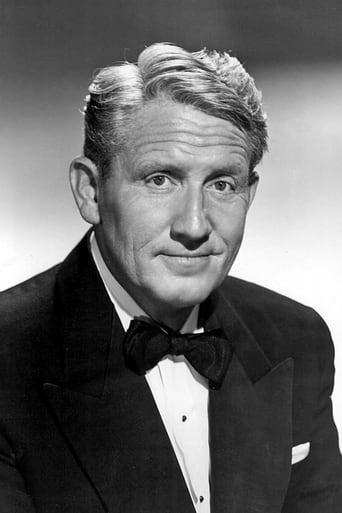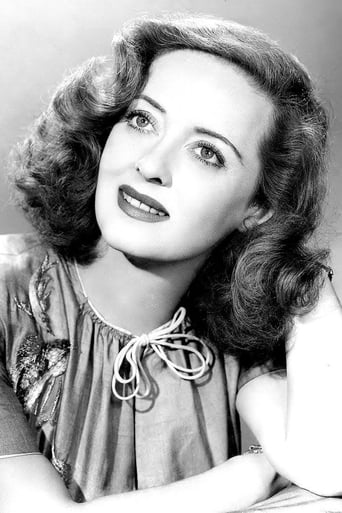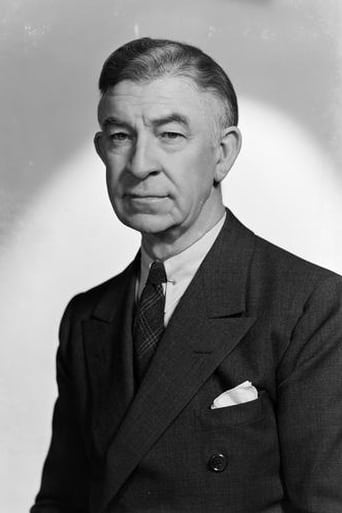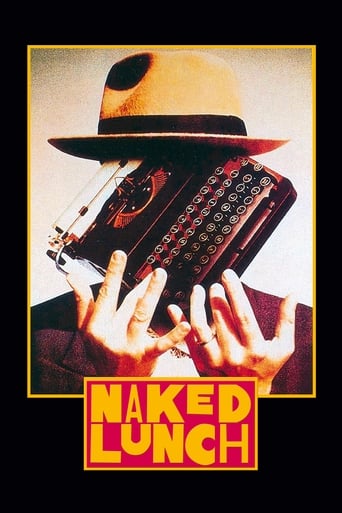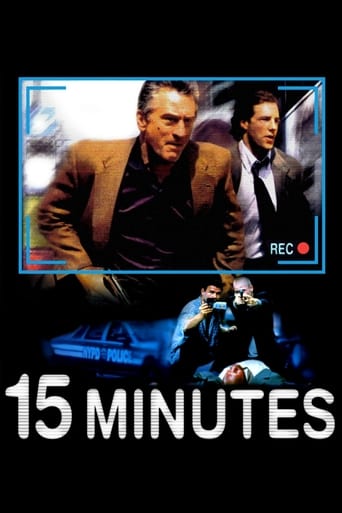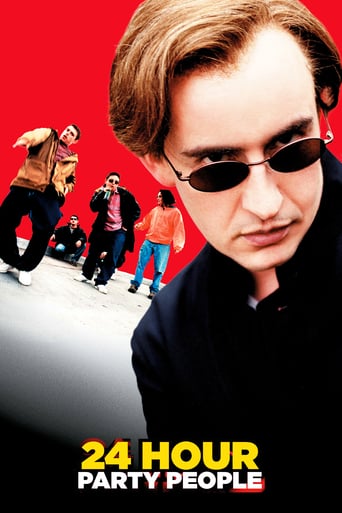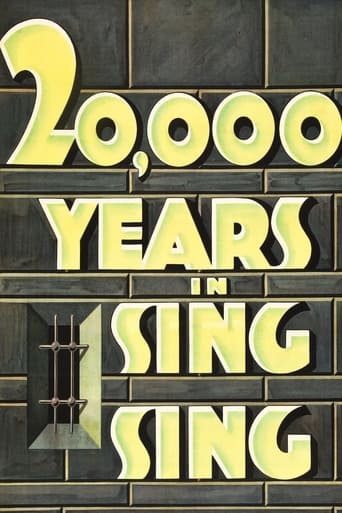
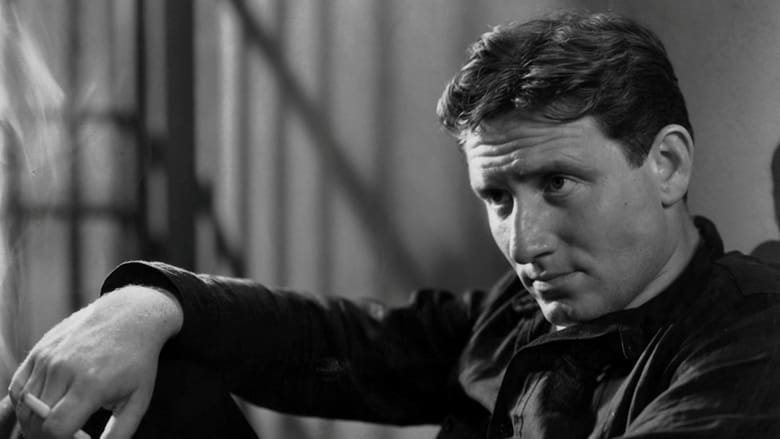
20,000 Years in Sing Sing (1932)
Brash hoodlum Tom Connors enters Sing Sing cocksure of himself and disrespectful toward authority, but his tough but compassionate warden changes him.
Watch Trailer
Cast
Similar titles
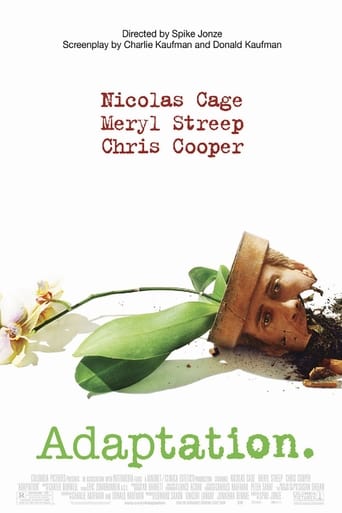
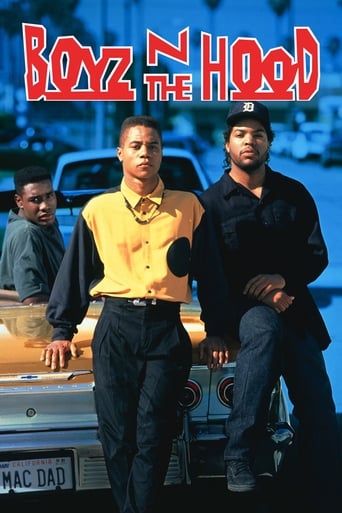
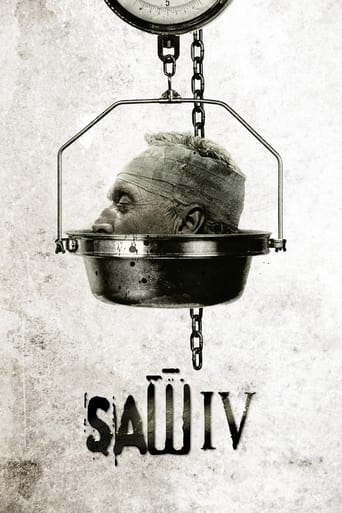

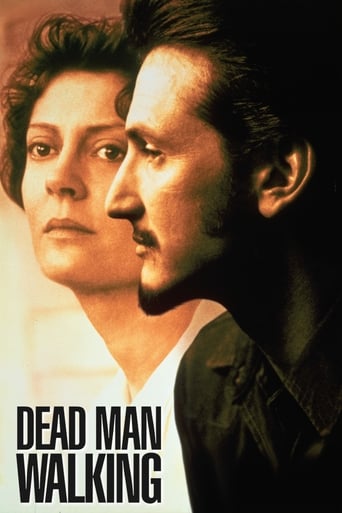
Reviews
That was an excellent one.
A different way of telling a story
I think this is a new genre that they're all sort of working their way through it and haven't got all the kinks worked out yet but it's a genre that works for me.
A clunky actioner with a handful of cool moments.
James Donlan is the most prominent reporter outside the warden's office in the "honor broken" sequence, whilst Clarence Muse plays a character called "Eight-Ball" on Death Row. I also spotted Thomas Jackson as the detective sitting opposite Charters on the train, though his voice is dubbed by another actor.Add "Silks by Cheney Brothers", and "Music played by The Vitaphone Orchestra conducted by Leo F. Forbstein" to the credits.Technically, "20,000 Years" seems a bit primitive by present- day standards. The conclusion appears especially abrupt. And not only is some of the dialogue clichéd, but its delivery, particularly by Tracy and Davis, often tends to be too broadly melodramatic. Another problem: The plot gimmick is introduced with all the subtlety of a hammer on a rock pile. Ditto, its inevitable outcome. What little characterization the writers bother to implant is either one-dimensional or (particularly in the case of Finn, as sturdily played by Louis Calhern) inconsistent. Still, Walter Byron makes the most of his meaty if somewhat sententious lines as the warden; and it's nice to see Ralph Dunn in one of the biggest roles of his career as Chief Guard Richards. Lyle Talbot and Warren Hymer are likewise outstanding. The bit where Hymer mouth-organs his way to the electric chair is unforgettable. Obvious doubles are used in the Tracy-Calhern fight scene, but otherwise Curtiz's direction ensures the action spots, especially those in the prison, are powerfully staged. An aborted escape sequence is obligatory in all prison pictures, but this one comes over as far more realistic and believable than most. Curtiz is right in his element with these vivid vignettes.
I watched this movie for the first time last night. I was blown away by the acting of Tracy and Arthur Byron (who plays the warden at Sing Sing). Byron has a commanding voice (he was a famous stage actor) and it is well used here. Director Curtiz obviously liked him because Byron gets a lot of screen time. There are a lot of reaction shots from Byron and Curtiz lets the camera linger on him - his thoughtful face fills the screen. Bette Davis is surprisingly feminine and very sexy. Her characters got edgier later in her career. Here she is very attractive and interesting to watch. The acting from the other supporting actors is not very good and the script is bad. The script simply does not make sense in places. Rockcliffe Fellowes plays Tracy's friend near the end of the picture. Fellowes was the excellent star of 1915's Regeneration (Raoul Walsh dir.)but his career nosedived in talkies. He is worth seeing. If you like pre-Code drama this is definitely worth a look.
Although I hadn't seen it in many years, this was a film that I remembered. Some of the scenes are simply unforgettable, even including the opening credits where as the convicts walk past their number of years follow them in white letters, leading up to "20,000 YEARS" and then the main title. A number of things made this film stand above the typical gangster flicks of the time. For example, much of the dialog is rather sophisticated for a prison yarn. A few select scenes seemed to be filmed on location along the Hudson River.I always saw Spencer Tracy's breakout film as being "Fury", made 4 years later, but after seeing this again, I would have to say this was a dramatic breakthrough for him. And, here he wasn't as guilty of talking loudly to look tough or "in charge" (as he often did in "Riffraff", for example).Time does take its toll, however. There was clearly part of a scene missing from the print supplied to TCM, roughly at the 26 minute point. when the Tracy character is being tested so as to determine what his job should be.I couldn't find anything online to support the idea that Sing Sing allowed a few prisoners out on the honor system, although I did find an article dating to the 1920s that supported the concept in general, although it did not mention Sing Sing. So, while this part of the plot seemed illogical...well, perhaps. I have to admit that it was handled well in the script. James Cagney had been the original star slated to star in this film, but I can't imagine him pulling this off as well as did Tracy.One thing that particularly interested me was the supporting role by Louis Calhern...the earliest film I have seen him in...and in this case the slick villain lawyer. Two other performances worth mentioning here are that of Bette Davis as Tracy's love interest...really quite beautiful here; and that of the warden, played superbly by Arthur Byron.A fine movie. Thank god it was Spencer Tracy and not Jimmy Cagney.
This movie is a tame, toothless wannabe prison/crime drama that doesn't hold a candle to its pre-Code siblings such as Scarface, Little Caesar, and Public Enemy, to name a few. I was quite disappointed.The movie starts out promising enough, with Spencer Tracy as a hardened tough guy being hauled off to Sing Sing. The problem with this movie is that is was really all over the map -- it didn't pick one genre and stick to it. At times it was a crime flick (or was pretending to be), at other times a light-hearted comedy, at other times a buddy flick (with the prison warden and Tracy being the buddies, no less!). The actors did well with their individual roles (including a very young and beautiful Bette Davis) and the story moved fairly apace, but in the end it added up to a whole lot of nothing for me.To top it off, there were some inconsistencies and/or hard-to-follow plot developments that bothered me: 1 - During a psychological test session to determine which manual labor to place the prisoners in, Tracy and Lyle Talbot do good enough on their puzzle to earn the "shoe shop" (top of the line job at the prison, according to the story), but dolt Hype can't fit the square piece into the square slot even after 5 minutes, so he is assigned lavatory duty. However, minutes later when we see the boys toiling away in the shoe shop, there's Hype too! 2 - While on his honor leave, Tracy decides he needs to get out of town rather than returning to prison. He talks to one of his buddies to make arrangements to leave on a train, and even hands over $5,000 to help grease the wheels and make the escape happen. Then, a scene or two later, we see Tracy showing back up at prison. What gives? 3 - The whole business with Tracy's lawyer and his girlfriend and the $5,000, I just didn't understand it. The movie tried to explain it but either they did a really bad job of it, or there were things going on in 1932 that you just had to be there to understand it (and hence my 2005 mind didn't quite catch), or I'm as big of a dolt as Hype. (I prefer not to think it's the latter!) Overall, it was fun to watch Tracy and Davis early in their careers, but honestly wasn't really worth having to sit through this movie in order to do so.
